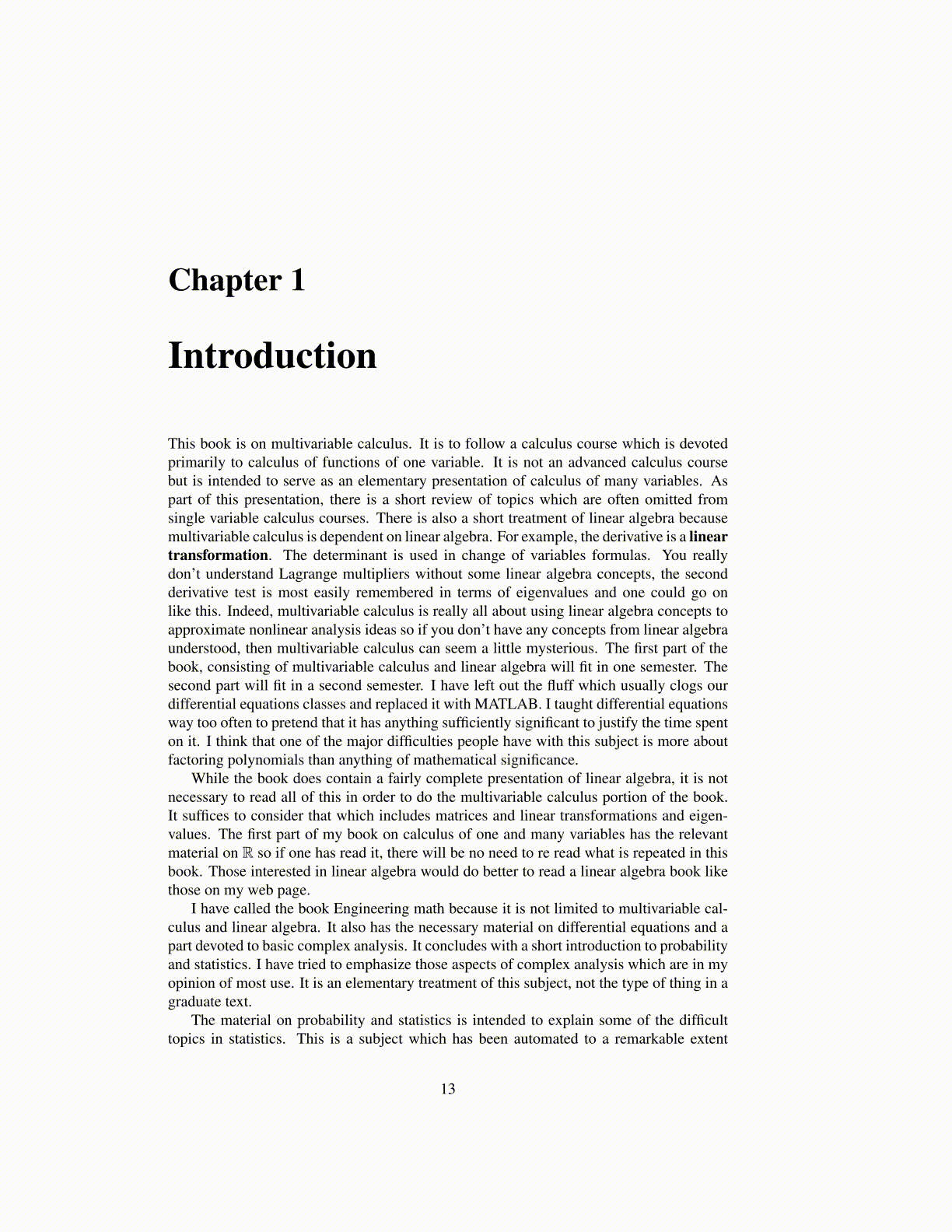
Chapter 1
Introduction
This book is on multivariable calculus. It is to follow a calculus course which is devotedprimarily to calculus of functions of one variable. It is not an advanced calculus coursebut is intended to serve as an elementary presentation of calculus of many variables. Aspart of this presentation, there is a short review of topics which are often omitted fromsingle variable calculus courses. There is also a short treatment of linear algebra becausemultivariable calculus is dependent on linear algebra. For example, the derivative is a lineartransformation. The determinant is used in change of variables formulas. You reallydon’t understand Lagrange multipliers without some linear algebra concepts, the secondderivative test is most easily remembered in terms of eigenvalues and one could go onlike this. Indeed, multivariable calculus is really all about using linear algebra concepts toapproximate nonlinear analysis ideas so if you don’t have any concepts from linear algebraunderstood, then multivariable calculus can seem a little mysterious. The first part of thebook, consisting of multivariable calculus and linear algebra will fit in one semester. Thesecond part will fit in a second semester. I have left out the fluff which usually clogs ourdifferential equations classes and replaced it with MATLAB. I taught differential equationsway too often to pretend that it has anything sufficiently significant to justify the time spenton it. I think that one of the major difficulties people have with this subject is more aboutfactoring polynomials than anything of mathematical significance.
While the book does contain a fairly complete presentation of linear algebra, it is notnecessary to read all of this in order to do the multivariable calculus portion of the book.It suffices to consider that which includes matrices and linear transformations and eigen-values. The first part of my book on calculus of one and many variables has the relevantmaterial on R so if one has read it, there will be no need to re read what is repeated in thisbook. Those interested in linear algebra would do better to read a linear algebra book likethose on my web page.
I have called the book Engineering math because it is not limited to multivariable cal-culus and linear algebra. It also has the necessary material on differential equations and apart devoted to basic complex analysis. It concludes with a short introduction to probabilityand statistics. I have tried to emphasize those aspects of complex analysis which are in myopinion of most use. It is an elementary treatment of this subject, not the type of thing in agraduate text.
The material on probability and statistics is intended to explain some of the difficulttopics in statistics. This is a subject which has been automated to a remarkable extent
13